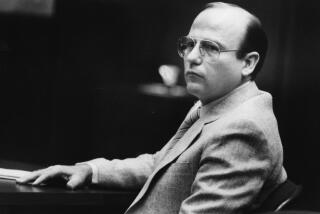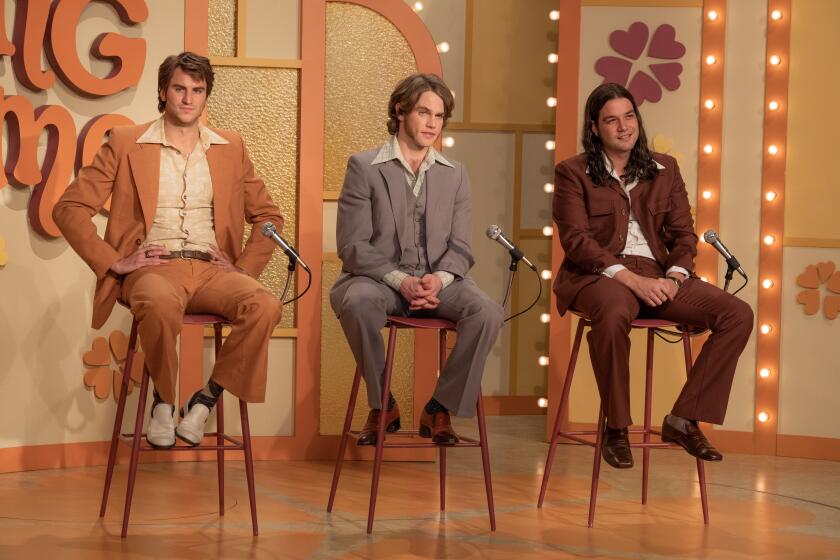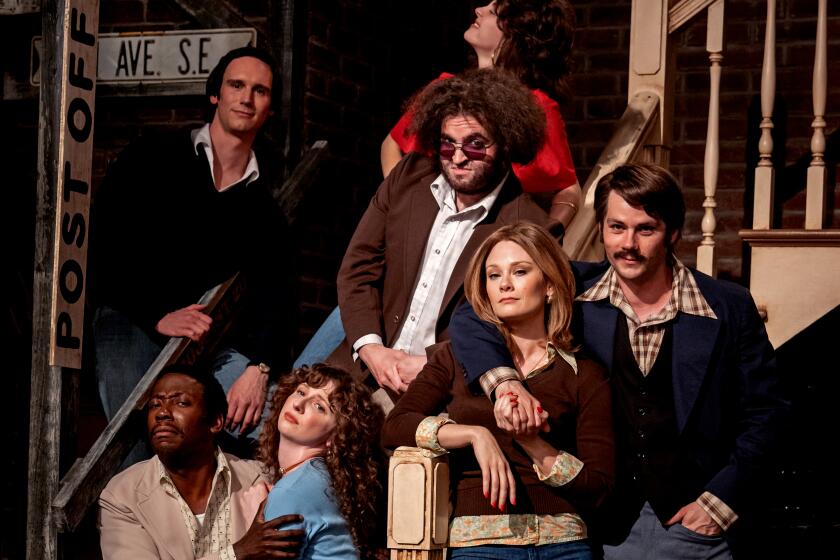Review: ‘Peace Officer’ looks at why local police adopt military tactics
The engrossing documentary “Peace Officer” looks at the militarization of police work from a fresh, provocative angle.
Any examination of cops acting like shock troops usually gets tied to institutional racism of American policing, and with good reason. “Peace Officer,” though, takes place in Utah, where African Americans make up less than 2% of the population. Here, the subjects of various police departments’ incongruous military tactics include a 37-year-old ex-Army paratrooper who grows marijuana in his basement, an unarmed 21-year-old woman vaguely suspected of buying drugs, a 36-year-old firefighter in the middle of a nervous breakdown and a man accused of being AWOL in a case of mistaken identity. All are white.
The film’s inspiring septuagenarian hero is William “Dub” Lawrence, a former sheriff in Davis County, Utah. He masterfully reconstructs chaotic crime scenes as he traces the missteps of SWAT teams and narcotics task forces for Scott Christopherson and Brad Barber, the movie’s co-directors. Conscience and obsession drive him on. In 1975, he established his state’s first SWAT unit. Thirty-three years later, he watched it kill his son-in-law.
SIGN UP for the free Indie Focus movies newsletter >>
As a young, forward-looking sheriff, Lawrence decided that deploying elite teams with exceptional firepower was the best way to halt episodes of escalating violence, whether they involved rioters, snipers, bank robbers or guerrillas. He didn’t envision SWAT teams being summoned to manage a domestic violence call.
But that’s what happened on Sept. 22, 2008, when Brian Wood, the firefighter who married Lawrence’s oldest daughter, snapped during a fight with his wife. He used 911 to say he had assaulted and raped his wife (she said that never occurred), then holed up in his truck with a loaded gun that he pointed at himself.
When just two policemen were on the scene, Lawrence assured Wood’s dad that they knew what they were doing. Then the troubled man was swarmed by SWAT teams, equipped with flash-bang grenades, pepper pellets, tear gas and impact bullets. The two fathers looked on aghast at the spectacle of law and disorder. They stayed out of the way, as commanded — right through the moment when a police sniper fired the mortal shot.
As Lawrence cracks the mysteries behind this and other tragedies, the movie’s larger issues snap into focus. When did police displays of “overwhelming” force — a domestic version of “shock and awe” — become acceptable for matters as routine as marijuana busts? How can the ruptured bond of trust between police and community be repaired?
The moviemakers slip in some excellent experts, such as Radley Balko, author of “Rise of the Warrior Cop: The Militarization of America’s Police Forces.” They trace the rise of special weapons and tactics units from the Watts riots to the war on drugs, and they pin the proliferation of military equipment in police departments to government programs that re-routed surplus armaments from both Gulf Wars.
Lawrence is the key to the film’s success. A magnetic character, he beams like a slimmed-down Santa because he lives for excavating the truth beneath official disinformation. Radiating energy and curiosity, he’s a great camera subject, whether sitting between walls covered with crime-related photos or tracing bullets’ trajectories with colored strings that form webs of death.
Police chiefs in “Peace Officer” insist that they employ military equipment for the safety of their officers. The impression left with the audience is that once this equipment is available, it will be used. To that extent, this movie demonstrates that police uber-violence is a problem that extends beyond race.
More to Read
Only good movies
Get the Indie Focus newsletter, Mark Olsen's weekly guide to the world of cinema.
You may occasionally receive promotional content from the Los Angeles Times.










